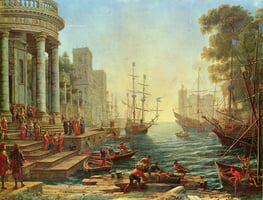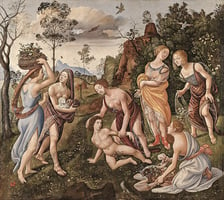Claude Lorrain is one of the most well-known and revered painters of the Baroque period. Born in...
Celebrating the Life and Work of John Constable: A Pioneering English Landscape Painter
John Constable was an English Romantic painter best known for his landscape paintings of Dedham Vale, the area surrounding his home in East Bergholt, Suffolk. He is also known for his seascapes and his large-scale paintings of the sky. He was born in East Bergholt on 11 June 1776, the son of Golding and Ann Constable, and was baptised at Dedham parish church on 14 June. Constable was initially educated at a local school, and later became an apprentice to his father, a prosperous miller.
He was highly influenced by Dutch Golden Age painters, particularly the work of Jacob van Ruisdael, and also by Claude Lorrain and Gaspard Dughet. He was also greatly influenced by his father's landscape drawings of the area surrounding his family home. Constable's first paintings were of the local countryside and the changing skies above it. He painted the local scenes with a great deal of detail and realism, often including figures in the landscape.
His most famous painting, The Hay Wain, completed in 1821, shows a rural scene of hay carts and horses crossing a river. Constable's artistic career was not particularly successful, and he was often short of money. He became a member of the Royal Academy in 1829, and was appointed Constable of the Tower of London in 1837, a position which provided him with a salary and the promise of a pension.
Constable was a great observer of nature, and his paintings capture the beauty of the English countryside. He was also a great innovator; he used new techniques, such as the 'skying' of skies, which involve painting the sky in a series of curved, undulating bands of colour. Constable's work has had a lasting influence on the British landscape tradition, and his work is celebrated in a number of places, including the John Constable Gallery in East Bergholt, Suffolk. His work is also held in public and private collections around the world, and his paintings continue to be admired today.



